Fine-tuning your investments for continuing inflation — and slower growth
After a difficult 2022 in which major stock indexes posted their worst performances since 2008, stocks are off to a strong start in 2023.
The S&P500 and TSX/S&P are both up over 6% for the year with most of that gain coming in January, which marked the best monthly start to the year in four years.
Whether the strong run is a harbinger of what’s to come or proves to be another bear-market rally is up for debate, with arguments on both sides. The major dividing lines: whether the U.S. economy can avoid recession; whether the Federal Reserve keeps rates higher for longer, pauses, or even eases; and the outlook for corporate earnings.
These six steps could help you keep your assets properly diversified and aligned to meet your long-term objectives.
- Revisit your investment goals.
Always a good idea to do this if it has been a while. Start by thinking about your personal goals and whether they’ve changed since your last review. Once you’ve updated your goals, make sure your asset allocation strategy aligns well with them. If you have a shorter time horizon, for example imminent retirement, or plans to make in big purchase such as a cottage in the near future — may call for more conservative investments and term deposit rates are now better than in the past.
2. Look at rebalancing your investments to maintain your asset allocation.
It may have shifted to make your portfolio more aggressive or conservative than you want. We call this Periodic rebalancing — selling some assets that have performed well — which is essential to staying properly diversified.
3. Evaluate concentrated positions.
If you have large, concentrated holdings in a specific company or asset class, carefully examine whether they still make sense for you. Concentrated positions add risk. Those risks may be less pronounced when assets are performing well. Volatile markets, in contrast, underscore the importance of staying diversified, so that a drop in any specific investment doesn’t unduly harm your investments.
4. Consider active investing.
Passive investing — a kind of set-it-and-forget-it strategy that minimizes buying and selling of assets — has grown in popularity in recent years. Exchange traded funds (ETFs), for instance, which seek to replicate the returns of broad indexes, are a common form of passive investing, and they perform well during surging markets. At a time of slower growth and greater volatility, however, passive investing may become less effective. Active investing involves funds whose managers use their experience to select assets that may outperform indexes. While there are no guarantees that active investing will generate specific returns or outperform passive investing, these skills come to the fore when markets overall are growing more slowly. This may be a time when active managers can add meaningful value to portfolios and complement passive investing.
5. Add some alternative investments.
Investments outside of the traditional stocks and bonds can provide further diversification to reduce risks and lower volatility. A good example of this is the Canada Pension plan which has increased their alternative investments over time by owning private investments including private debt, real estate and private equities.
6. Invest tax-efficiently.
Looking to reduce taxes? Consider holding less tax-efficient investments in tax-advantaged accounts and more tax-efficient investments in taxable accounts. And if volatility drives down the value of some investments you’d like to sell, “taking advantage” of those losses in your taxable accounts this year could help offset taxable capital gains from investments that have performed well.
As you consider these steps, keep in mind that short-term buying and selling in anticipation of market swings isn’t among them. Many studies confirm that attempts to “time” the markets by getting in and out usually fail, and that missing even a handful of the best market days could have serious consequences on your overall returns.
The best approach is to stay invested in a portfolio that’s diversified across and within asset classes.
How things are looking as of February 17th, 2023
| Year to date | |
|---|---|
| S & P 400 (US markets) | 6.2% |
| TSX/S&P (Canada) | 5.8% |
Sources:
https://www.bnnbloomberg.ca/
https://ca.finance.yahoo.com

















